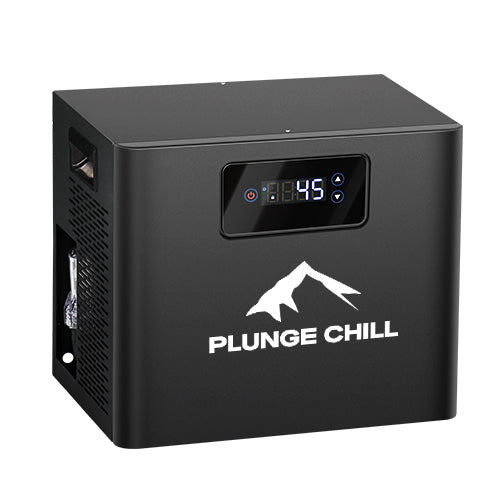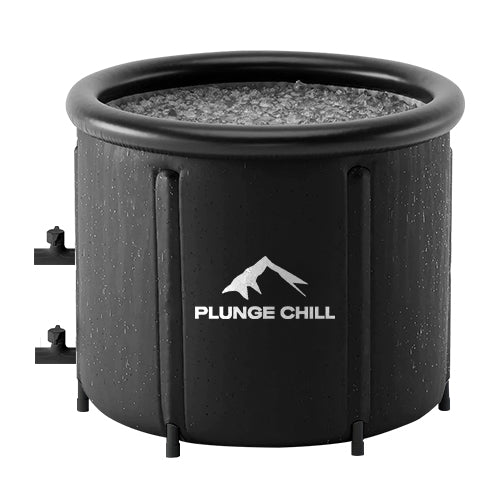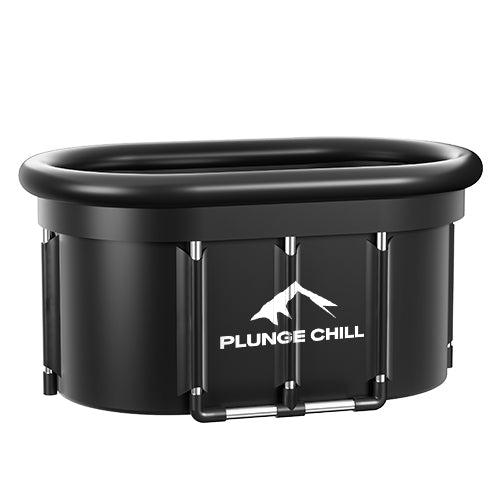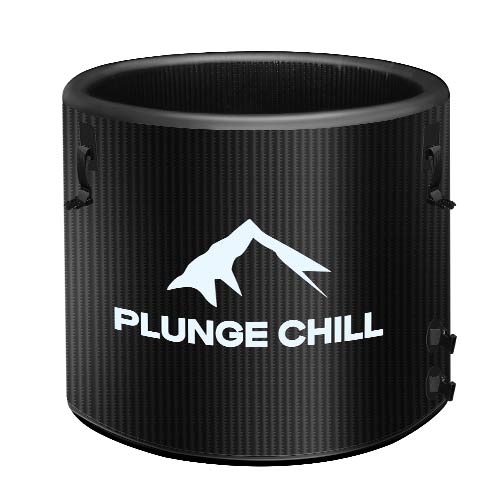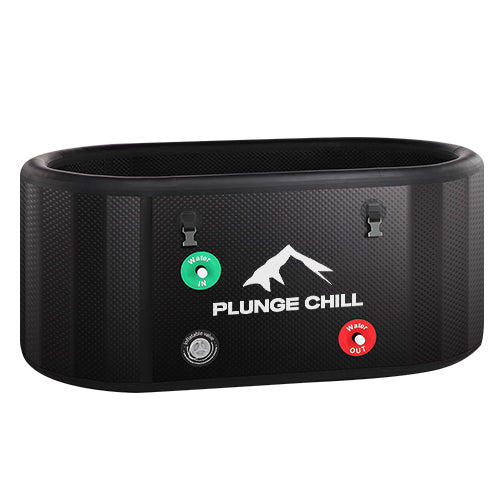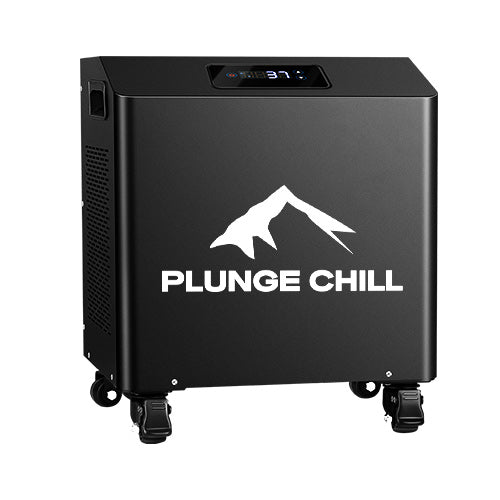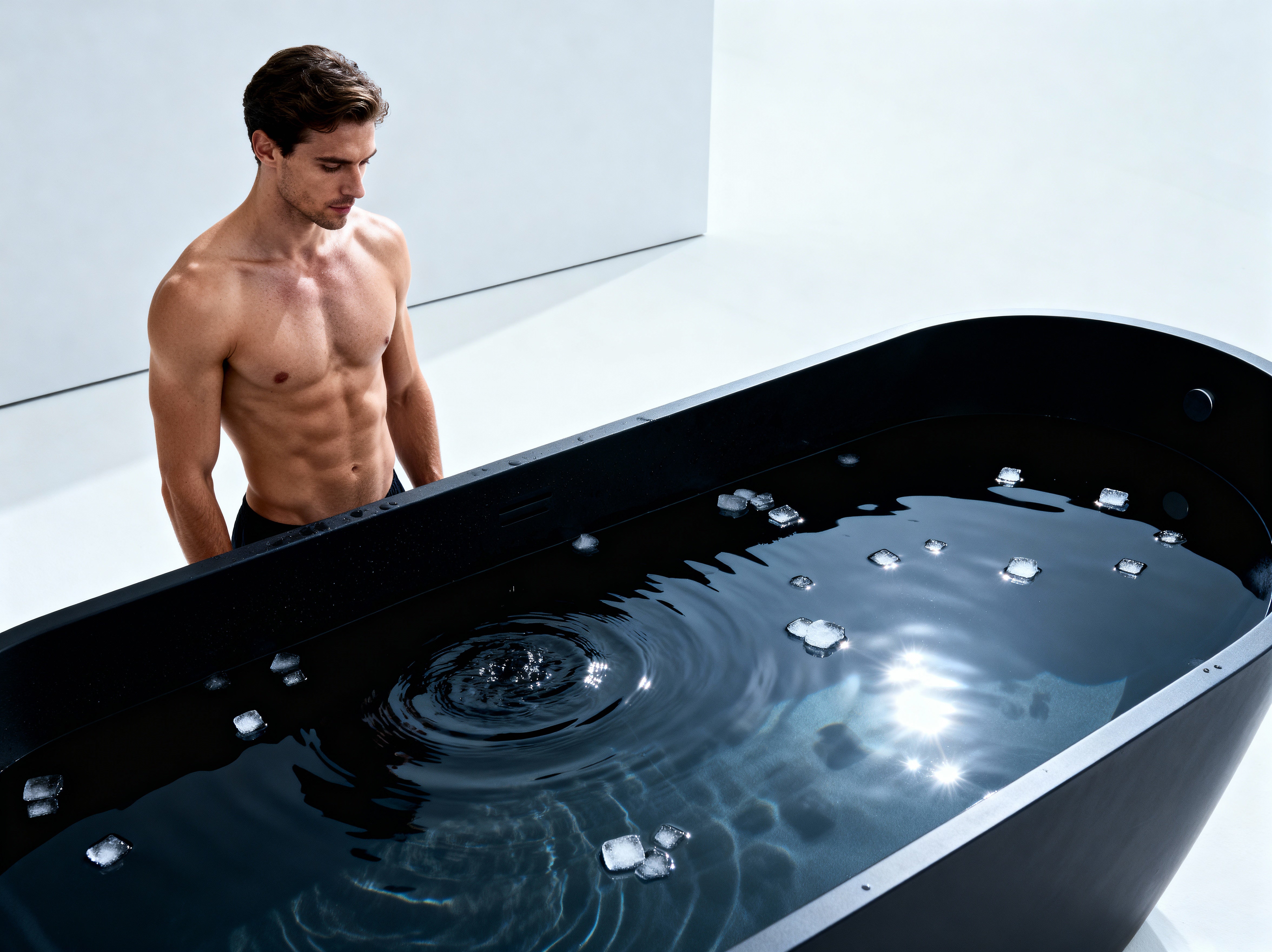Athletes often add cold plunges to a fat‑loss phase hoping to reduce soreness, recover faster, and burn a few extra calories. The part that is less widely appreciated is how cold exposure interacts with the biology that actually preserves muscle. As a sports rehabilitation specialist and strength coach who also tests cold plunge hardware for teams and home users, I want to be crystal clear: cold water immersion can be an asset during a cut, but only when its timing, dose, and purpose align with the priority of retaining lean mass. The research is mature enough to guide practice, especially regarding post‑resistance training use, yet still has gaps that require practical judgment.
This article explains the mechanisms and outcomes that matter for muscle retention during fat loss, integrates the best‑available evidence, and translates it into precise scheduling, dosing, and purchasing choices. Throughout, I will distinguish between performance‑oriented recovery and adaptation‑oriented training so you can decide when to use cold, when to delay it, and when to skip it entirely.
Definitions You Actually Need
Cold water immersion (CWI) refers to immersing most or all of the body in cold water, typically at 50–59°F for around 10–15 minutes, immediately or soon after exercise. This contrasts with whole‑body cryotherapy chambers that use extremely cold air rather than water. Delayed onset muscle soreness (DOMS) is the familiar muscle pain that peaks 24–72 hours after unaccustomed or high‑volume work. Brown adipose tissue, commonly called brown fat, is a metabolically active tissue that generates heat when you are cold and is sometimes discussed in the context of fat loss and metabolic health.
The Physiology: Why Cold Feels Good But Can Cost You Adaptation
Cold water rapidly reduces tissue temperature and perfusion through vasoconstriction and also dampens nociceptor signaling, which reduces pain. Meta‑analyses summarized by Frontiers in Physiology report that CWI reliably lowers immediate soreness and perceived exertion, and sometimes lowers circulating creatine kinase at 24 hours. Those outcomes are useful when your next session is close and you need to feel better.
However, when we look at molecular and long‑term adaptation, several controlled trials show a different story. A Journal of Physiology meta‑analysis and longitudinal work found that routine, immediate post‑exercise CWI can blunt hypertrophy and strength gains compared with low‑intensity active recovery. Proposed mechanisms include dampened mTORC1 signaling and ribosome biogenesis, both crucial for muscle growth, even if not every downstream marker changes in lockstep. Importantly, human biopsy work published on PubMed Central has shown that CWI did not meaningfully suppress intramuscular inflammation compared with active recovery after resistance exercise. That means the analgesic benefit is likely not due to reduced cytokine signaling inside the muscle but rather to altered nociception and temperature‑driven effects, while the cost to anabolic signaling still accrues.
In practice, the implication is straightforward: if you plunge immediately after lifting, especially during an energy deficit, you may feel better but signal your body to build less muscle than it otherwise would. During a fat‑loss phase where muscle retention is paramount, feeling better should not come at the expense of the mechanical and molecular signals you’re trying to preserve.

What Changes When You’re Cutting
Cutting weight imposes a caloric deficit that already challenges muscle protein synthesis. You protect lean mass by maintaining a high‑quality resistance training stimulus and adequate recovery. Because CWI can dampen the very cascades that defend your muscle during a deficit, the margin for error narrows. This is why timing—and not just temperature—matters.
Two authoritative practice advisories—one from the American College of Sports Medicine and another from Ohio State Health—recommend delaying CWI after lifting when strength or hypertrophy are training priorities. ACSM suggests a 4–6‑hour delay, while Ohio State Health favors 24–48 hours for lifters. Both can be right depending on your context. If you are in a cut and serious about muscle retention, bias your plan toward the longer delay on heavy lifting days and confine cold to non‑lifting days or far from your gym window. When competition congestion or a hard endurance block makes symptom relief the priority, you can shrink the delay, but understand the trade.

Evidence Snapshot: Short‑Term Performance vs Long‑Term Muscle
One reason confusion persists is that studies differ in design and endpoints. A PubMed Central running trial reported that post‑exercise immersion at 59°F likely improved a subsequent 5‑km time trial performed four hours later, with cooler core temperatures and elevated excess post‑exercise oxygen consumption observed. By contrast, a Physiological Society summary of new data suggested hot water immersion restored power more effectively than cold in the hour after intense intervals, with no next‑day difference in endurance capacity. Meanwhile, the Journal of Physiology meta‑analysis synthesizing resistance training interventions over weeks to months points to reduced hypertrophy with routine immediate cold use.
Those findings are not mutually exclusive. The studies use different temperatures, sports, recovery windows, and primary endpoints. Same‑day endurance performance, next‑hour power, and months‑long hypertrophy reflect different biology. The conflict is largely explained by study design: immediate analgesia and core temperature control can help a second endurance bout on the same day, whereas repeated blunting of anabolic signals after lifting degrades long‑term muscle accretion. Put simply, performance between events is not the same question as muscle retention across a cut.

Cold Exposure and Fat Loss: Calorie Burn, Brown Fat, and Reality
Several health systems note that cold exposure increases energy expenditure during rewarming and can activate brown fat. A Utah health briefing cites approximately 11 minutes per week in cold water among winter swimmers and links this to brown fat activity, while Ohio State Health explains that cold may help convert some white fat to brown and modestly increase calorie burn. These effects likely exist but should be kept in perspective for muscle retention in a caloric deficit.
Two overlooked details deserve attention. First, the short‑term metabolic bump does not necessarily translate to meaningful body‑fat reduction without adherence to diet, and if you are already in a deficit, additional energy drain could be counterproductive for recovery unless you adjust intake. This is an inference based on energy balance principles rather than a direct intervention trial; Confidence: Low. A sensible verification step is to track body mass, training loads, and subjective recovery for two weeks with and without morning cold exposure while maintaining identical calories. Second, despite frequent claims that cold reduces “inflammation,” the human biopsy data showing similar intramuscular cytokine responses between CWI and active recovery suggests the fat‑loss benefit is not driven by anti‑inflammatory mechanisms inside the exercised muscle. PubMed Central reports support this nuance.
Timing, Dosing, and Goals: A Practical Map
The best way to keep muscle while cutting is to separate your cold from your lifting. Use cold to manage symptoms when it protects performance you care about, not reflexively after every session. When you do use it, pick a dose supported by recovery research rather than extremes.
|
Goal Context |
When to Place CWI |
Suggested Dose |
Primary Rationale |
Representative Sources |
|
Preserve muscle during a cut with heavy lifting |
Morning on non‑lifting days or at least 24–48 hours after lower‑body or whole‑body resistance sessions |
10–15 minutes at 50–59°F; or two 5‑minute bouts at 50°F with 2 minutes room‑temp rest |
Minimizes interference with anabolic signaling while still providing mood and resilience effects |
Ohio State Health; ACSM; Journal of Physiology |
|
Back‑to‑back events or dense endurance block |
Immediately post‑event or between sessions when symptoms limit performance |
10–15 minutes at 50–59°F |
Short‑term analgesia and thermoregulatory control to safeguard next event |
Frontiers in Physiology; PubMed Central endurance trial; ACSM |
|
Acute muscle strain or simulated injury recovery |
Prefer heat for repeated sessions unless cold is needed for comfort |
Hot water immersion around 107.6°F for ~60 minutes in repeated sessions; cold for symptom relief only |
Human data suggest heat improves regeneration, while cold is neutral vs thermoneutral |
The Journal of Physiology (hot vs cold human injury model) |
|
Late‑day recovery when sleep is precious |
Avoid late plunges; move to morning |
If used, keep brief and earlier in day |
Cold may disrupt sleep when used late, and sleep supports muscle retention |
ACSM |
Protocols I Recommend When Muscle Retention Matters
If you decide to keep cold in your routine while cutting, make three adjustments. First, delay it away from your resistance training window. Use the Ohio State Health 24–48‑hour guidance for lifters when feasible; if scheduling is constrained, the ACSM 4–6‑hour delay still reduces risk relative to immediate use. Second, cap your exposure to evidence‑based ranges: 10–15 minutes at 50–59°F, or two 5‑minute bouts at 50°F separated by a room‑temperature pause, as summarized by ACSM. Third, if your training day mixes endurance and lifting, use cold after the endurance segment only, then keep it out of the post‑lift period.
A note on showers: cold showers are convenient and can raise alertness, but they deliver more variable dosing than immersion and have weaker evidence for post‑exercise recovery. For precision during a cut, immersion is preferable if you are going to use cold at all.

Mechanisms and Two Often‑Missed Points
One heavily repeated claim is that cold reduces post‑exercise inflammation in the trained muscle, thereby aiding recovery. Human biopsy studies published on PubMed Central do not support a robust anti‑inflammatory effect compared with active recovery in this context; cytokines rose after exercise under both conditions with no significant between‑group differences. The most consistent benefits of CWI—less soreness and lower perceived exertion—are better explained by nociceptor modulation and temperature effects than by shutting down inflammatory pathways inside the exercised muscle.
Another under‑discussed finding is that hot water immersion can facilitate muscle regeneration after a simulated injury, whereas cold water was no better than thermoneutral. The Journal of Physiology and the Physiological Society have both highlighted this theme. This does not mean you should stop using cold for symptom relief after hard efforts; it does mean that if muscle healing is the goal, heat may be the superior choice in structured, repeated applications. The difference likely reflects angiogenesis and satellite cell activity enhanced by heat in the days after injury, whereas cold’s vasoconstriction is not helpful to regeneration in that time course.

Safety, Contraindications, and Sensible Risk Management
Screening is mandatory. ACSM lists prior cold injury, Raynaud’s disease, hypothyroidism, cryoglobulinemia, stage III–IV heart failure, coronary artery disease, unstable angina, uncontrolled hypertension, and sensory or sympathetic nervous system disorders among contraindications. Claustrophobia is another concern for certain setups. Several health systems emphasize hypothermia, cold shock, and loss of consciousness as risks, particularly in open water. Reduce risk by using supervised or at least observed sessions, measuring water temperature rather than guessing, avoiding late‑day plunges that may impair sleep, keeping towels and warm clothing nearby, and warming naturally afterward rather than with scalding showers. Do not plunge alone in rivers or surf; moving water adds currents and unpredictable thermal load.

Product Buying and Care Tips for a Cut‑Focused Athlete
From a product reviewer’s perspective, you want equipment that lets you dose the cold precisely, keeps the water clean, and fits your space and budget. For many athletes, a stock tank or inflatable tub is a sensible start; Utah primary‑care guidance notes that simple setups can cost on the order of a hundred dollars, while fully featured chillers with filtration can run into the thousands. Mayo Clinic Health System notes that premium home systems can cost up to $20,000.
If you’re in a dedicated fat‑loss phase where muscle retention is the priority, consider three features. Precision temperature control in the 50–59°F range matters because this is where the recovery evidence concentrates. A reliable filtration and sanitation path matters because you will be spacing cold sessions and want water to stay hygienic when partially used across the week. Insulation and a lid reduce energy costs and stabilize temperature.
The following statements are practical inferences from facility management rather than claims tested in the above trials. Confidence: Low. Before purchasing, verify temperature accuracy with an external thermometer; ask the manufacturer for filtration flow rate and filter replacement intervals; and test noise levels if you live in an apartment. Cleaning best practices such as non‑foaming disinfectants, regular filter changes, and periodic full water replacement are advisable; to confirm specifics, consult the unit’s manual and ask for NSF or comparable sanitation standards documentation. A simple verification step is to obtain a copy of the unit’s service manual and inspect its recommended maintenance schedule before purchase.

Practical Use Cases Across a Cut
When a team I support is in a congested fixture period, we do use CWI on endurance‑dominant days to protect same‑day or next‑day performance, but we explicitly keep it away from heavy strength sessions. In the off‑season hypertrophy block leading into a cut, we remove immediate post‑lift plunges and instead program active recovery and sleep hygiene as first‑line tools, re‑introducing cold later in the day or the following morning if athletes want it for mood and alertness. For athletes managing a minor strain during a cut, we often dose hot water immersion in the subacute window to support regeneration, while using brief, localized cold only for comfort on high‑load days.
Although these patterns are informed by the literature, they are not randomized trials. They are nonetheless consistent with the signals from ACSM, Frontiers in Physiology, Journal of Physiology, Physiological Society reports, and multiple PubMed Central analyses.

Pros and Cons for Muscle Retention During Fat Loss
The clear advantages of cold in a cut are improved perceived recovery, potential improvement in next‑session tolerance when events are packed, thermoregulation after hot environments, and possible mood and alertness benefits when used in the morning. The clear downside for muscle retention is the risk of blunting hypertrophy and strength adaptations when cold is used immediately post‑lifting, a risk that is most relevant when you are trying to keep muscle in a deficit. Risk is modifiable through timing and dose.
A neutral point with practical implications is that the anti‑inflammatory narrative is weak in human exercise biopsy data, which means you cannot count on cold to “fix” inflammation in the trained muscle; rely on sleep, nutrition, and well‑programmed training volume for that.
Careful Conflicts and Why They Happen
Multiple sources disagree about performance benefits of cold in the short term. Some endurance studies show likely improvements between same‑day bouts, while others suggest hot water restores power better than cold within an hour. These results likely diverge because of differences in study endpoints (endurance time trial versus jump power), populations (trained runners versus recreational athletes), environmental conditions, and the way “benefit” was defined (probabilistic magnitude inference versus null hypothesis significance tests). Over longer horizons, the hypertrophy‑blunting signal is more consistent and most relevant to muscle retention.
FAQ
Does cold water immersion help me keep muscle while I’m cutting?
It helps indirectly by controlling soreness, which can preserve training quality during dense schedules. But if your goal is muscle retention, you should avoid immediate post‑lift plunges because repeated use in that window is associated with smaller hypertrophy and strength gains. Place cold far from lifting or on non‑lifting days while you are in a deficit. Sources summarizing this include the Journal of Physiology and the American College of Sports Medicine.
Will cold exposure burn enough extra calories to matter for fat loss?
The rewarming process increases energy expenditure and may activate brown fat, according to health‑system summaries from Ohio State Health and Utah. The effect is likely modest relative to diet and training. If you are already in a deficit, any additional energy drain should be balanced with adequate recovery so your lifting quality stays high. This is a practical inference rather than a quantified effect. Confidence: Low. To verify, keep diet unchanged for two weeks and compare weight, training output, and fatigue with and without morning cold.
If I have a minor muscle strain during a cut, should I use cold or heat?
For comfort, brief cold is reasonable. For regeneration after a substantial injury model, human data suggest hot water may be superior, while cold was no different than thermoneutral control. That makes heat a better choice for repeated recovery sessions in the days after a strain, particularly if your aim is tissue healing rather than short‑term analgesia. The Journal of Physiology and the Physiological Society have reported these findings.
How cold and how long should I plunge?
Protocols most consistently used in studies are 10–15 minutes at 50–59°F, or two 5‑minute bouts at 50°F separated by a couple of minutes out of the water. These doses reduce soreness without venturing into extreme cold. When lifting is your priority, the timing of the plunge—not just temperature—is the bigger lever for protecting muscle.
Is cold safe for everyone?
No. Contraindications include prior cold injury, Raynaud’s disease, hypothyroidism, cryoglobulinemia, stage III/IV heart failure, coronary artery disease, unstable angina, uncontrolled hypertension, and certain nervous system disorders; claustrophobia and unsupervised open‑water plunging introduce different hazards. Risks include cold shock, hypothermia, and loss of consciousness. ACSM and several health systems emphasize screening and supervised use.
Should I buy a dedicated cold plunge or start with a simple tub?
If you’re experimenting during a cut, a simple stock tank or tub with measured ice water can be enough to test timing and dose. Dedicated chillers add convenience, precise temperature control, and filtration. Utah health guidance notes basic setups can be inexpensive, while Mayo Clinic Health System notes premium units can cost up to $20,000. Before purchasing, ask for temperature accuracy data, sanitation guidance, and power and noise specs. These buying steps are practical inferences rather than data from the cited training trials. Confidence: Low. Verify by requesting the manufacturer’s service manual and testing with an external thermometer.
Takeaway
Cold water is a valuable tool when you need to show up again soon and feel less sore; it is not a free recovery upgrade if your priority is preserving muscle while you diet. During a fat‑loss phase, separate cold from lifting by at least 24–48 hours when possible, or at minimum 4–6 hours, and keep exposures in the 10–15‑minute, 50–59°F range. Use it after endurance sessions, in congested schedules, and for morning alertness, not reflexively after weights. Honor contraindications, screen properly, and choose equipment that gives you precise, hygienic control rather than chasing extremes. If you align timing with goals, you can keep the recovery you want without sacrificing the muscle you’ve worked to build.
References
- https://lms-dev.api.berkeley.edu/cold-tub-therapy
- https://cupola.gettysburg.edu/cgi/viewcontent.cgi?article=2078&context=student_scholarship
- https://www.health.harvard.edu/blog/can-cryotherapy-stop-your-pain-cold-or-is-just-a-lot-of-hot-air-2018041813612
- https://www.mcphs.edu/news/physical-therapist-explains-why-you-should-chill-out-on-ice-baths
- https://ideaexchange.uakron.edu/cgi/viewcontent.cgi?article=3606&context=honors_research_projects
- https://pmc.ncbi.nlm.nih.gov/articles/PMC5285720/
- https://health.osu.edu/wellness/exercise-and-nutrition/do-ice-baths-help-workout-recovery
- https://healthcare.utah.edu/the-scope/mens-health/all/2024/04/171-cold-hard-facts-about-cold-plunging
- https://www.wau.edu/wp-content/uploads/2020/06/ContrastShower.pdf
- https://today.wayne.edu/news/2021/03/22/is-cold-water-swimming-good-for-you-41963
Disclaimer
The information provided in this article is for informational and educational purposes only and is not intended as medical advice or as a substitute for professional medical advice, diagnosis, or treatment. The author is a sports rehabilitation specialist and strength coach, not a medical doctor. The views and opinions expressed in this article are those of the author and based on their professional experience and interpretation of the cited research.
The content of this article discusses physiological processes related to metabolism, brown adipose tissue, glucose regulation, and training adaptations. Always seek the advice of your physician or other qualified health provider with any questions you may have regarding a medical condition (such as diabetes, cardiovascular disease, or metabolic disorders) or before starting any new health or wellness practice, including cold water immersion. Do not disregard professional medical advice or delay in seeking it because of something you have read in this article. Reliance on any information provided in this article is solely at your own risk.
